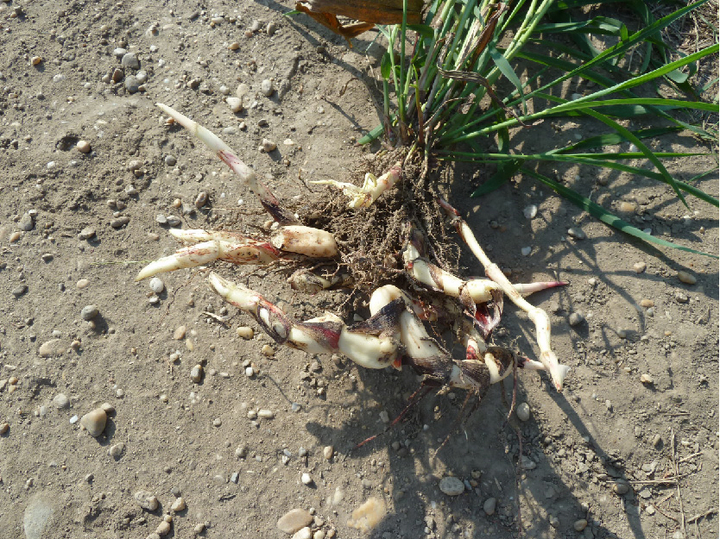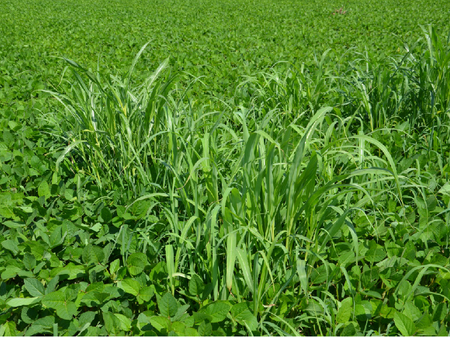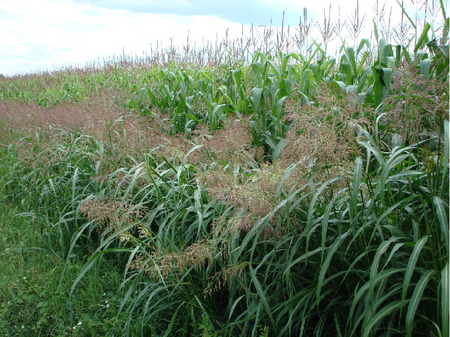Johnson grass
Sorghum halepense (L.) Pers.
Distribution
Aleppo millet is a cosmopolitan and occurs worldwide. Since 1972, it has occurred in a few places in maize fields in Styria and has increasingly spread in the southern parts (Leibnitz and south-east Styria districts) in recent years. In Upper and Lower Austria and in Burgenland, further scattered populations as well as larger clusters have been observed in recent years. In Carinthia, only very isolated occurrences are known to date. In addition, the species also occurs on ruderal areas (railway land), roadsides and landfills in the individual federal states.
Aleppo millet is also an important weed in neighbouring countries to the south and east (Hungary, Slovenia, Italy).

Under favorable site conditions, a single plant can produce up to 28,000 seeds and form up to 40 m of rhizomes. The rhizomes are mostly located in the upper 20 cm of the soil. They usually do not penetrate deeper than 40 cm, although rhizomes have been found over 100 cm. They sprout as soon as temperatures of 15 °C are reached. The seeds, however, germinate only at higher temperatures (> 20 °C). The species prefers moist, nutrient-rich soils and a warm climate. The rhizomes are not frost tolerant and freeze easily. However, the deeper they penetrate the soil (> 20 cm), the more likely they are to survive.
Studies have shown that spatial dispersal in the field follows a specific pattern. Rhizomes that enter the field quickly form small nests. The rhizomes of these nests are very easily displaced in the direction of tillage, by more than one to eight meters per year. Thus, more nests ("satellites") are formed. However, individual nests can also grow strongly within a year, increasing in size by 2 to 17 times, and then merge with each other. Thus, Aleppo millet can spread over the entire field within a short time.
Economic importance
Due to its size and competitive effect, Aleppo millet can overgrow and suppress the crop. The greatest damage and yield loss occurs when the species emerges along with the crop. Aleppo millet is particularly common in summer crops, such as corn, soybean, and oil squash. In Hungary, yield losses of 30 to 40% have been observed at high densities in corn. The crop is also a reservoir of important viruses for maize and sorghum, for example, maize dwarfing virus. The virus is transmitted to the crop by aphids.



Prevention and control
- Early detection and targeted measures (e.g., spot application of herbicides) to control initial nests to prevent establishment and spread on arable land.
- Effective herbicides are available (see list of plant protection products approved in Austria). In dicot crops, graminicides (FOPs, DIMs) can be used. Especially in maize, there are grass-effective ALS inhibitors that provide sustainable control.
Specialist information
Publications
Follak S., Hochfellner L., Schwarz M., 2021: Watch out! Aleppo millet is becoming a problem. The plant doctor 74(5), 22-23.
Follak S., Essl F., 2013. Spread dynamics and agricultural impact of Sorghum halepense, an emerging invasive species in Central Europe. Weed Research, 53, 53-60.
Follak S., Essl F., 2023. problems with the Aleppo millet are increasing. TopAgrar Austria 8/2023, 37-39.
Last updated: 01.02.2024
automatically translated
